OPTIMIZATION
Stop Ignoring Your Meta Tags:
Why Not Taking Your Meta Tags Seriously Is Costing Your eCommerce Business
OPTIMIZATION
Stop Ignoring Your Meta Tags:
Why Not Taking Your Meta Tags Seriously Is Costing Your eCommerce Business
Meta elements (tags) are among the oldest and most storied features of webpages and the internet itself. First implemented back in 1995 starting with the keywords attribute, meta tags have since been iterated on, expanded, and revised into a substantial list of attributes. Many meta tags are SEO ranking factors and when leveraged correctly and fully, these meta tags can supercharge your organic visibility in search results, increase your click-through rates, and drive sales and lead generation.
In our experience, however, many of these opportunities are lost or ignored, costing you real money. Let's talk about the most common and important meta tag elements, how they can help your business, and why you need to take them seriously.

8 Meta Tags You Can't Afford to Ignore
1. Meta Title (Title Tag)
What is a meta title tag? Your meta title tag is one of the most important meta tags in all of SEO in general and for eCommerce in particular. Typically the first major meta tag that appears in any page’s HTML code, it governs how the link to your page appears in search results.

Why it's important: Simply put, title tags that are SEO-optimized and include the target keywords rank in the top 5 positions of Google 85% of the time. Search engines lean on your meta title tags to help them understand the keywords that are most relevant to your pages and subsequently which keywords should trigger your page to appear when those terms are searched by users. Further, shoppers use them to confirm that the page in their search results is relevant to what they were looking for before clicking. As such, it’s important you get it right.
Key Insights:
Put your keyword(s) right at the beginning of your meta title. Title tags that include keywords rank in the top 5 positions of Google 85% of the time.
Try to closely match the meta title with the page title (h1). A consistent focus across your webpage reduces the odds that Google will rewrite the title tag.
Use pipes (|) instead of dashes (-). They save precious horizontal space.
Don’t bother adding your brand name to the meta title. Google is now adding brand names to the top of search listings, so you can reclaim that space for more keywords or a more compelling meta title.
Note: The meta title has a character limit in search results. Meta titles typically truncate after about 64 characters, so keep that in mind if you want the full page title to be displayed in search. Titles between 4-60 characters have been found to have the best click-through rates.
VALUED SEO CLIENTS





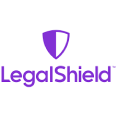
2. Meta Description
What is a meta description? Meta descriptions are HTML meta elements that give space for roughly a sentence’s worth of copy below any given blue link in search results. They are intended to provide a short summary of the content to engender trust and encourage clicking on the link. Typically the second major meta tag that appears on a page’s HTML code, the meta description is a bit unique. Interestingly, despite being the longest and most informative piece of copy in search results for a page, it is not directly an SEO ranking factor.

Why it's important: So you can skip it for our products and collections pages, right? Absolutely not. While this element does not hold direct SEO value, it has an outsized impact on click-through rates.
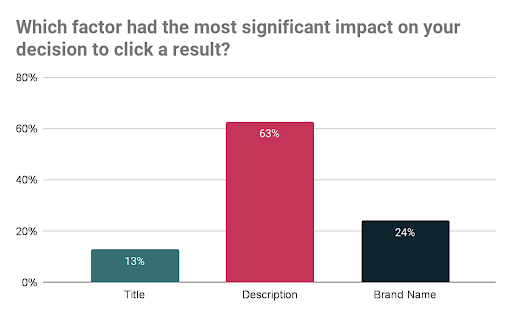
According to the most recent research of its kind, surveyed respondents identified the meta description as the most important element in a search results listing, and it isn’t particularly close. It’s dominant and yet many businesses ignore them entirely in our experience, wasting one of their earliest opportunities to influence a potential visitor’s click.

If you needed another point of encouragement: 95% of pages ranking in the top 10 have meta descriptions according to recent research.
Our recommendation? Take the time necessary to write a great template (or set of templates) for your meta descriptions. Make sure they’re present on every relevant page on your site, without exception, with particular attention to product detail and product listing pages. All things being equal, a great meta description with an effective CTA has the power to be the differentiating factor between someone clicking on your products… or on your competitor’s products instead. Your best competitors are almost certainly pushing this advantage in their favor and have been doing so for a long time.
Key Insights:
Keep your meta description length between 120-150 characters. Longer than that and your meta description is likely to get truncated, compromising the message you’re looking to communicate.
Always look to build in a call to action (CTA). Incentives and strong calls to action can significantly increase your click-through rates. If space allows, add one.
Include your target keyword(s). Even though it doesn’t affect your ranking position, keywords get bolded by search engines (see our above example where “Boyfriend Blazer” was bolded, as it was part of the search phrase that yielded the listing), which helps to further affirm in the mind of the searcher that the content they will find if they click on your search result is relevant to their search.
3. Header Tags
What are header tags? Header tags are the titles and subtitles that make up the bones or structure of your content. Think of it like a research report you may have written in high school: The outline for that report would have included a single title for your paper, then subtitles/chapters, and subtitles/subsections for those subtitles as needed. Header tags serve the same purpose, but for online content. Each tier or level of title and subtitle is given a special tag designation from <h1> … <h6>, where <h1> serves as your single title and each lower number represents a subsection or subtitle.
In our example here, Homemade Banana Pudding is our main article title, with major subsections being “Ingredients” and “Directions.” Additional subtitles for those subsections appear a tier below those. By setting your content up with proper structure using header tags, your content becomes easier to follow for your visitors and for search engines.
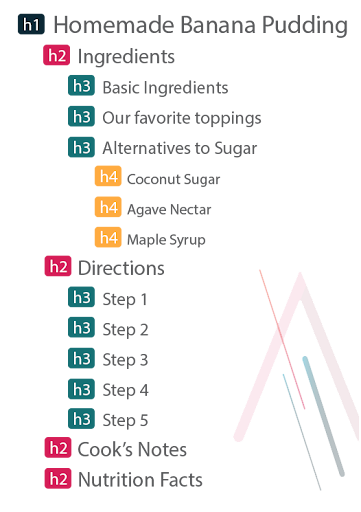
Why they’re important: Header tags serve a few essential purposes:
- They provide your visitors with structure for your content, allowing it to be easier to read and parse. There’s a reason why every book you’ve ever read has this basic structure (title, chapters).
- They provide you with the ability to offer a Table of Contents or quick links right at the top of articles, allowing visitors to quickly get to the parts of your article that are relevant to their interests, adding usability and additional SEO value.
- They provide search engines with a clearer understanding of your content, its structure, and what’s important. Content in header tags is assumed to be important and its keywords are given higher than normal weight relative to the rest of your content.
The better the structure, the more search engines can understand your page and its relevance to your target keywords and topics, the more likely you are to be placed higher in search results and get more traffic from the audiences you’re trying to reach.
Key Insights:
Develop the outline for your articles and content first, placing header tags based on the title/subtitle structure covered here.
Do not use header tags exclusively to increase font sizes. Use CSS to adjust font sizes and styles to taste. One of the most common mistakes we see in header tag usage is this. Again, these are intended to be used to define the structure of your content, not for aesthetics.
Use only one < h1 > tag per page. H1 tags are the titles of your articles, papers, or books. You should only have one of them. You can have as many H2 - H6 tags as you need.
Try to include H2 tags as well. Most articles will have subtitle sections, and PDPs typically have at least a product description section where header tags can be used, but sometimes they can be missed. Give your content a review and see if more header tags can be used. Add keywords to your titles. Remember, header tags carry a bit more weight than other places for your keywords, so definitely look to include them in your header tags as often as feels reasonable and natural. Don’t overstuff this text with keywords, but if you can add the main keyword naturally, do so.
4. Canonical Tags
What are canonical tags? Canonical tags are an essential part of SEO, yet are often overlooked. These tags are used in the HTML code of a webpage to specify the 'canonical' or 'preferred' version of a web page. Imagine you have multiple pages with similar or duplicate content; the canonical tag tells search engines which version you want to be indexed and ranked. This is especially useful in managing duplicate content issues that can harm your SEO performance.
Why they're important: Canonical tags play a central role in guiding search engines to the correct version of a webpage. Without these, search engines might index multiple versions of the same content, diluting the authority of the page and potentially leading to lower rankings as the pages compete against each other for position and clicks. They can also cause a degree of user confusion as they may not be sure which result is the one that will actually resolve their search goals. Moreover, by consolidating link signals to a single URL, canonical tags help maintain the SEO strength of the page.
Key Insights:
Always specify a canonical tag when you have duplicate or similar content across multiple URLs. This avoids confusion for search engines and helps maintain your page's authority.
Using self-referencing canonical tags is a good practice. Even if there’s no duplicate content, it’s a signal to search engines that the URL in question is the version you want to index.
Be consistent with your domain preference in canonical tags. If you use 'www' or 'https' in your website’s primary version, ensure that your canonical tags reflect this preference.
Remember, canonical tags are a suggestion, not a directive. Search engines might choose to ignore them if they find them to be inappropriate or if there are other conflicting signals.
Cross-domain canonicals can be used when republishing content across different domains. This tells search engines where the original content resides and helps prevent issues with duplicate content.
Carefully check your canonical tags during site migrations or redesigns. Incorrectly set canonicals can lead to significant SEO issues, such as unintentionally pointing search engines to the wrong version of a page.
5. Noindex and Nofollow Meta Robots Tags
What are ‘noindex’ and ‘nofollow’ meta tags? 'Noindex' and 'Nofollow' are directives used in the meta robots tags within a webpage's HTML code. The 'Noindex' tag instructs search engines not to include a page in their index, effectively keeping it out of search results. On the other hand, 'Nofollow' tells search engines not to follow or pass on link equity through the links on that specific page.

Why they're important: These tags are essential tools in your SEO arsenal for controlling how search engines interact with your website's content. They help in managing the visibility and link equity flow of your site. For instance, 'Noindex' is vital for pages that you don't want to appear in search results, like thank you pages, login pages, internal search result pages, or duplicate content. 'Nofollow' is useful for links that you don't endorse or want to pass value to, such as user-generated content or paid links.
Using 'Noindex' and 'Nofollow' tags strategically allows you to guide search engines toward your most valuable content and manage the flow of link equity, which is essential for maintaining a healthy, well-performing website in search engine rankings.
WordPress Owner Alert: If you own a WordPress site and it doesn’t seem like your website is ranking, check its indexing status and make sure the “Discourage search engines from indexing this site” option is NOT checked.
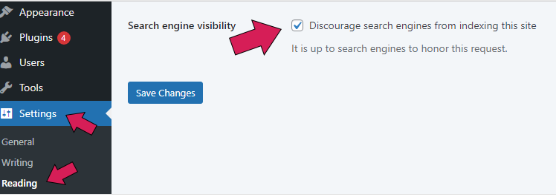
This checkbox is intended to be ticked for sites that you don’t want to be indexed and is almost always enabled during the development phase of a website so that Google and other search engines don’t index a site before it’s ready for public viewing. Functionally, it adds 'Noindex' and 'Nofollow' to every page on your website. It is somewhat obscure (hidden beneath multiple menus as noted in the image) and is very easy to forget to untick after a new site launch (no, it doesn’t untick itself). We see this often among our new clients having issues ranking and it is a very common oversight for WordPress site owners. Take a moment to see if this box is checked!
Key Insights:
Use 'Noindex' for pages that offer no SEO value or could potentially harm your site’s ranking if indexed. This includes duplicate content, private content, or pages with thin or non-unique content.
Remember that 'Noindex' means the page won’t appear in search results, but it can still be crawled. If you want to block a page from being crawled entirely, use the robots.txt file.
'Nofollow' should be used carefully. It’s ideal for controlling the flow of your site’s link equity or for links that are not trusted or paid for. However, overuse can restrict the natural flow of link equity throughout your site.
Incorrect usage of 'Noindex' can lead to significant portions of your site being excluded from search engines, negatively impacting your site’s visibility and traffic.
For 'Nofollow,' misuse can result in losing valuable link equity distribution across your site, potentially diminishing the ranking power of other pages.
Regularly audit your use of these tags. Ensure that 'Noindex' isn't applied to important pages and that 'Nofollow' isn’t overly used on internal links.
Be cautious with large-scale changes. Mass applying 'Noindex' or 'Nofollow' can have unintended consequences on your site’s SEO performance.
6. Alt Text for Images (Alt Tags)
What is alt text for images? Image alt tags, short for 'alternative text,' are attributes used in HTML to provide a text description of an image on a webpage. At the most basic level, these tags play a principal role in describing the appearance and function of an image, especially in instances where the image cannot be displayed or seen by the user.
Why they're important: Alt tags serve two main purposes: They improve accessibility for users who are visually impaired and rely on screen readers to navigate the internet, and they provide context to search engines about the content of the image, which can aid in image and page SEO. Proper image alt tagging can empower your images to appear in image searches and in product image carousels (for the eCommerce readers out there), which are becoming more and more prevalent in search results.
Importantly, under the Americans with Disabilities Act (ADA), websites are required to be accessible to users with disabilities, which includes providing alt text for images. Failure to comply with ADA standards can have legal ramifications, including potential lawsuits for non-compliance.
Key Insights:
Ensure every relevant image on your website has an alt tag that accurately and succinctly describes the image. This improves user experience and SEO. Alt tags are a legal requirement under the ADA for digital accessibility. Neglecting them can not only harm your SEO but also leave you vulnerable to legal action.
Use relevant keywords in your alt text where appropriate, but avoid keyword stuffing. The primary purpose of alt text is to provide clear and useful descriptions for those using screen readers.
Don't overlook decorative images. If an image is purely decorative and adds no informational value, use an empty alt attribute (alt="") to let screen readers know they can skip it.
Be descriptive and specific in your alt text. For example, instead of just saying 'flower,' say 'red rose in full bloom' to give a better understanding of the image. We recommend using the alt Decision Tree.
For complex images like charts and graphs, provide a thorough description that conveys the same information as the image.
Regularly review your site to ensure all images have appropriate alt tags. This is not only good for SEO and accessibility compliance but also enhances the overall quality of your website. If you’re running an eCommerce site with thousands of images, we recommend developing a template and strategy to implement them site-wide with minimal pain. If you need assistance planning or executing this, we can help.
If you’re not sure which images should or should not have an alt tag, we recommend using the alt Decision Tree.
7. Open Graph and Twitter Cards
What are Open Graph and Twitter tags? Open Graph tags and Twitter Cards are types of HTML markup that control how URLs are displayed when shared on social media platforms, particularly on LinkedIn, Facebook and Twitter.
Open Graph (OG) tags, initially developed by Facebook, define how content appears in a user’s news feed by specifying elements like the title, description, and image.

Twitter Cards work similarly but are tailored for the Twitter platform, allowing you to add media experiences to Tweets that link to your content. If you’ve ever pasted a link into a new post or tweet and saw it auto-populate with an image, a headline, and a description, that was the Open Graph tag doing it’s thing!
Why they're important: With the power of social media and its potential for driving traffic and engagement to storefronts, how your content appears on these platforms can significantly impact its performance. Well-configured Open Graph tags and Twitter Cards ensure your content is not only more attractive and engaging at first glance when shared, but also provides a consistent message that aligns with your brand. This can lead to increased click-through rates, better engagement, and more effective social sharing which can support backlink growth.
Key Insights:
Use Open Graph tags to control the title, description, and image that appear when your webpage is shared on Facebook and other platforms that support OG tags.
For Twitter, use Twitter Card tags to specify how your content should be displayed, whether as a summary card with image, a large image with description, or even a card tailored for media (like video).
The image you choose for OG tags and Twitter Cards should be visually appealing and relevant to the content. This can greatly increase the likelihood of users engaging with your post.
Ensure that the titles and descriptions in these tags are compelling and give users a clear reason to click on the link.
Remember, consistency is key. The way your content appears on social media should reflect the messaging and branding on your actual website.
Test how your tags are working. Both Facebook and Twitter offer tools to preview how your content will look when shared.
Be mindful of size specifications for images on these platforms. Images that don’t meet the requirements might get cropped awkwardly or not display at all.
For eCommerce businesses, consider using product-specific tags (like 'product:price:amount' in OG) to display key product information in shares.
8. Schema Markup
What is HTML Schema? Schema markup, a form of structured data, is a powerful tool used in SEO to provide search engines with specific information about a page’s content. It’s a semantic vocabulary of tags (or microdata) that you can add to your HTML to improve the way search engines read and represent your page in search engine results pages (SERPs).
Why it's important: Schema markup significantly enhances your eCommerce website’s visibility and presentation in search results through “rich snippets”. These snippets blanket modern search results, commonly noted via the inclusion of elements such as star ratings, images, opening hours, shipping and delivery timelines, special sales, and more. As search engines evolve, schema markup's importance in indexing becomes increasingly evident, occupying more space in search results and shaping user interactions.
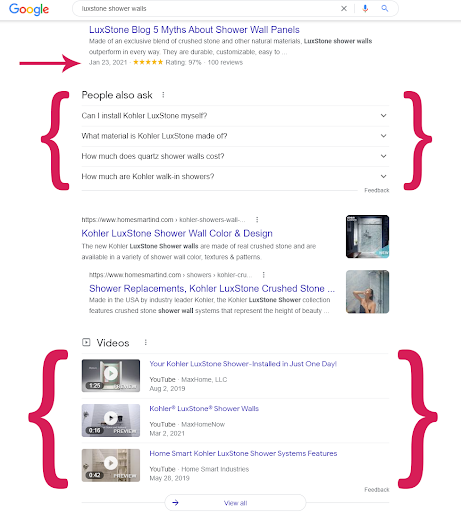
Schema plays a pivotal role in creating enhanced descriptions, or rich results, that appear beneath the page title. These rich results influence features like 'People Also Ask' sections, image carousels, and featured snippets. For eCommerce businesses, schema markup can highlight product prices, availability, review counts, and more directly in the search results, significantly boosting click-through rates and customer engagement.
In the modern search landscape, schema markup is critical for content indexing and display. It provides context and clarity to search engines, improving SEO performance and enhancing user experience by making information more accessible and actionable directly from search results. If you haven’t already, prioritize maximizing the schema on your website to leverage its full potential.
Key Insights:
Implement product schema to display rich product information like price, availability, and review ratings. This is particularly effective for eCommerce sites, as it makes product listings more attractive and informative in search results.
Use schema for breadcrumbs. This can help display your website’s navigation path in search results, making it easier for users and search engines to understand where the page sits within your site hierarchy.
Take advantage of schema markup for organization information, such as contact details and social media profiles. This helps in building brand presence and credibility in search results.
For content-rich sites, use article or news schema on relevant content. This can help your articles stand out in search results, potentially increasing visibility and traffic.
Implement event schema for any events your business hosts or participates in. This can show event details like date, location, and ticketing directly in search results.
Be aware of the influence schema markup has on voice search and digital assistants. Structured data can help these technologies understand and relay your content more accurately to users.
Regularly test and validate your schema implementation using tools like Google's Structured Data Testing Tool to ensure it’s working correctly and effectively. We use this tool constantly and can’t recommend it enough. It’s free and takes seconds.
Getting Meta with It
We'll leave it here for now so you can digest and check your website to see how well it’s doing at checking these SEO boxes. Hopefully this provides good insight into the importance of these meta elements and why we value them. In future installments of this series, we will continue to elaborate further on the SEO Must-Dos outlined here.
If you have any questions about meta elements or search engine optimization in general, contact us. Our senior SEO team has been helping websites reach #1 in search results the right way for more than 25 years. We're ready to help you too.

DIGITAL MARKETING
Top 10 Photos of Developers Staring At Screens

DIGITAL STRATEGY
5 Ways Retailers Can Make Influencer Marketing More Influential

ECOMMERCE